If you have a watch battery that isn't working, you may be wondering how to test it. In this post, we'll learn, how to use a multimeter to test the watch battery. We'll also give you some tips on how to extend the life of your watch battery. Keep reading!
Types of watch batteries and how to recognize them:
There are many different types of watch batteries, and each has its distinct benefits and drawbacks. The most common type of battery is the lithium-ion battery, which offers a high energy density and is relatively lightweight. However, these batteries can be expensive, and they require careful handling to avoid damage.
Other common types of watch batteries include nickel-cadmium (NiCd) and nickel-metal-hydride (NiMH) batteries. NiCd batteries offer a lower energy density than lithium-ion batteries, but they are less expensive and have a longer life span. NiMH batteries offer similar advantages to NiCd batteries, but they are more environmentally friendly.
When choosing a watch battery, it is important to consider the specific needs of your watch. If you need a battery that will last for a long time, then a lithium-ion or NiMH battery may be the best choice. If you need a battery that is less expensive and easier to replace, then a NiCd battery may be the better option.
No matter which type of watch battery you choose, it is important to follow the manufacturer's instructions carefully to ensure safe and proper use.
How to use a multimeter to test watch batteries:
KAIWEETS digital multimeter is an essential tool for any watchmaker. It can be used to test the voltage of a battery, check for continuity, and measure resistance. While most multimeters will have specific instructions for testing watch batteries, the process is generally the same.
1) Firstly, set your multimeter to the "DC Voltage" setting.
2) Once you have done that, take the red lead and touch it to the positive (+) side of the battery.
3) Then, take the black lead and touch it to the negative (-) side of the battery.
4) Finally, observe the reading on the multimeter display. If the battery is functional, it should read between 1.5V and 3V.
If it reads 0V or below, then this indicates that the battery is flat and needs to be replaced.
With a multimeter, testing watch batteries is quick and easy. This simple process can save you a lot of time and money in the long run.

How to Extend the Life of Your Watch Battery:
A watch battery is a small, coin-sized battery that powers the movement of a watch. The average lifespan of a watch battery is about two years, but with proper care and maintenance, you can extend the life of your watch battery significantly.
Here are some tips on how to extend the life of your watch battery:
- Avoid excessive exposure to heat and cold. Extreme temperatures can shorten the lifespan of your watch battery.
- Store your watch in a cool, dry place when not in use. This will help prevent moisture from damaging the battery.
- Avoid exposing your watch to water or other liquids. Water can damage the seals around the battery, causing it to leak and fail prematurely.
- Avoid dropping or jarring your watch. Rough handling can damage the delicate components inside the watch, including the battery.
- Have your watch serviced regularly by a qualified watchmaker. This will help ensure that your watch is running smoothly and that the battery is in good condition.
By following these simple tips, you can extend the life of your watch battery and keep your watch running smoothly for many years to come.
Frequently Asked Questions:
How much voltage does a watch battery have?
A watch battery typically has a voltage of around 3 volts. This is enough to power most watches, which generally only require a small amount of power to run. However, some watches may require more power and may have a higher voltage battery. It is always best to check the specific requirements for your watch before purchasing a new battery.
What is the most common type of watch battery?
The most common type of watch battery is a lithium-ion battery. Lithium-ion batteries are used in many electronic devices, including watches. They are known for their high energy density and long life span. Watch batteries typically last for several years before needing to be replaced.
Lithium-ion batteries are not the only type of battery used in watches, but they are the most common. Other types of batteries that may be used in watches include alkaline batteries, lead acid batteries, and nickel metal hydride batteries. Each type of battery has its advantages and disadvantages.
How long should a watch's battery last?
This is a question that often comes up, and there isn't necessarily a definitive answer. It depends on a few factors, such as the type of watch, how often it's used, and what features it has.
For instance, a basic watch with no special features might last for several years on a single battery. But a more complex watch with multiple functions (like an alarm or stopwatch) may need to have its battery replaced every few months.
There are also some things you can do to extend the life of your watch's battery. Avoiding exposure to extreme temperatures, for example, can help prevent the battery from draining too quickly. And if your watch has an automatic feature that winds the watch when you move your wrist, be sure to wear it regularly so that the watch stays properly wound.
In general, though, you can expect a watch battery to last for several years with normal use. If you find that yours is dying more quickly than that, it may be time for a new battery.
Conclusion:
In conclusion, testing a watch battery with a kaiweets digital multimeter is a quick and easy way to see if your battery needs to be replaced. By using the multimeter, you can test the voltage of the battery to see if it is within the normal range. If the voltage is low, then this is an indication that the battery needs to be replaced.

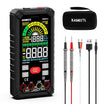
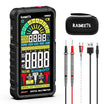
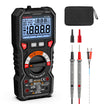
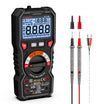

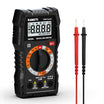
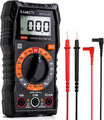
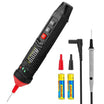
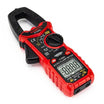
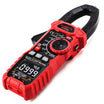
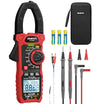

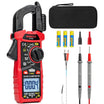










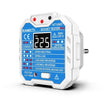
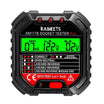
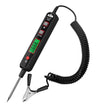


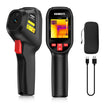


























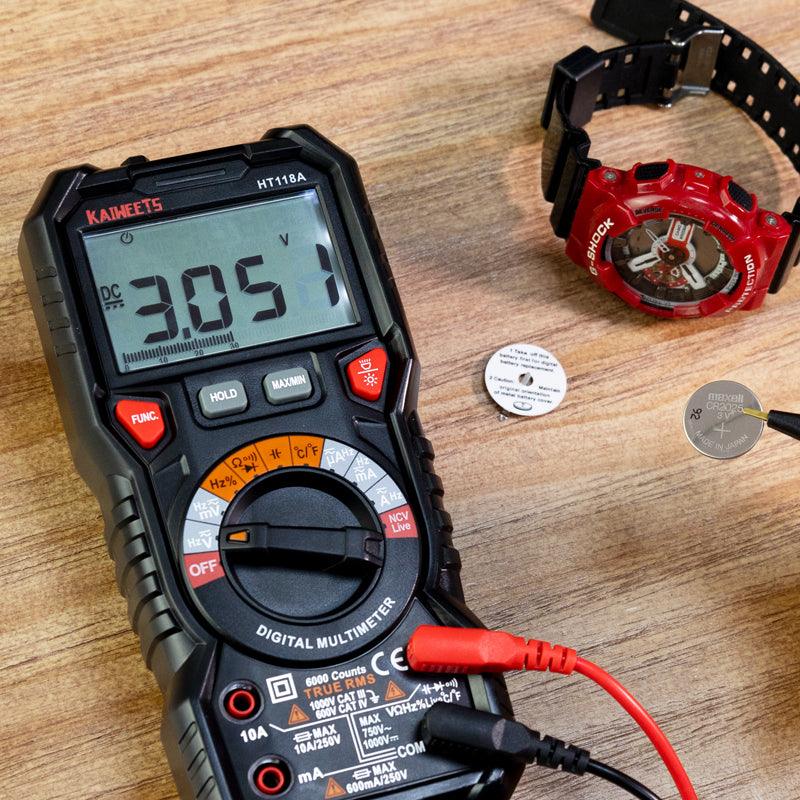

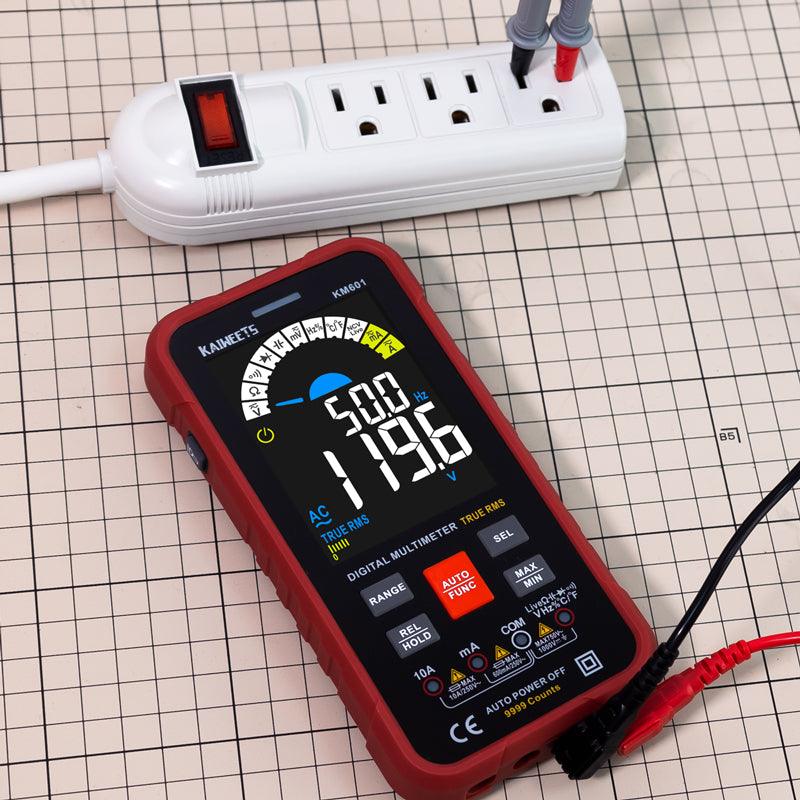
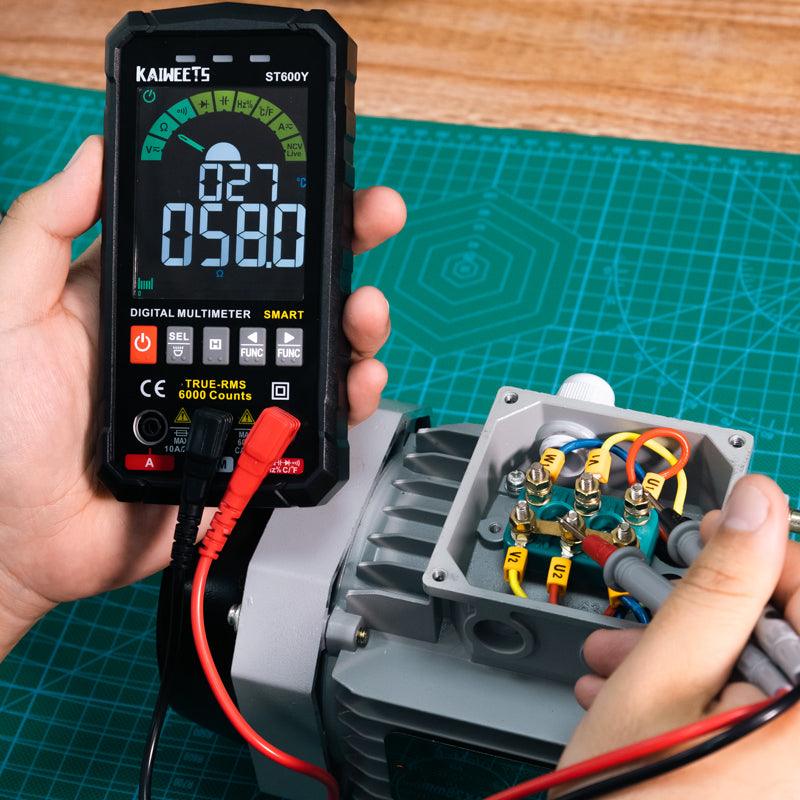
Leave a comment
All comments are moderated before being published.
This site is protected by hCaptcha and the hCaptcha Privacy Policy and Terms of Service apply.